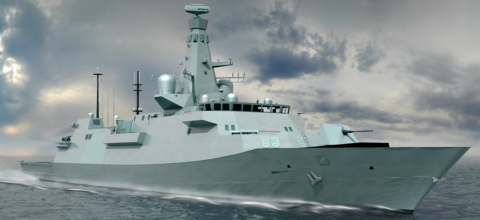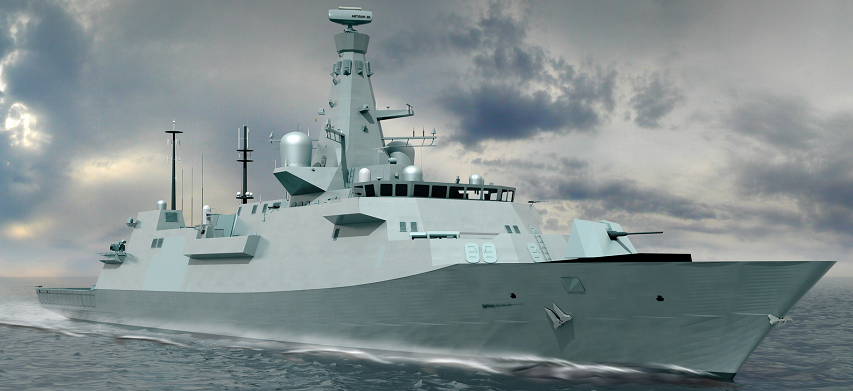Sandwiches of History
Published 27 Oct 2024Welcome back to another episode of You’re Doing it Wrong. Lol. Also known as International Sandwich Sunday. I’m joking, kinda. Today, we’re headed northeast to Halifax, Nova Scotia for the Halifax Donair. As I mention in the video, this was created by a Greek immigrant after his traditional lamb and beef gyros just weren’t selling. So it’s less cultural appropriation and more adaptation to the needs of the market. I think if you ask anyone in Halifax, they’d fully acknowledge the original inspiration for this. Also, if you’re tempted to comment on how it’s not a sandwich, just know that, while I understand where you’re coming from, I don’t keep strict purity tests in place for sandwiches as I don’t want to miss out on deliciousness because of them. Join me, won’t you?
(more…)
February 15, 2025
Halifax Donair (Canada) on Sandwiches of History
December 14, 2024
December 6, 2024
The Halifax Explosion | A Short Documentary | Fascinating Horror
Fascinating Horror
Published Feb 23, 2021“On the 6th of December 1917 two ships collided in the mouth of Halifax Harbour in Nova Scotia, Canada …”
► Suggestions: hello@fascinatinghorror.co.uk
MUSIC:
► “Glass Pond” by Public Memory#Documentary #History #TrueStories
December 5, 2024
Mélanie Joly in Halifax, demonstrated her belief that “communication” is much more important than “action”
In The Line, Matt Gurney continues his report from the recent Halifax International Security Forum, where the Trudeau government’s representatives were Foreign Affairs Minister Mélanie Joly and Bill Blair, the Minister of National Defence:
Whoo boy. Mélanie Joly has got to go. Now. Today, if possible. Because we’ve got problems enough without, uh, well … maybe I should just explain what happened.
Joly is, of course, our foreign affairs minister. She and Bill Blair, the national defence minister, constituted the “star power” the Trudeau government sent to the Halifax International Security Forum, which I attended late last month. Joly would have, no doubt, taken part in many direct meetings with allied counterparts and various stakeholders behind closed doors during the three-day event. I can’t tell you what happened there. I can tell you, though, what happened during her public, on the record appearances. One of them in particular. And I can tell you what happened after it.
It wasn’t good.
I covered a bit of the basics about the Forum itself — what it is, who funds it, who shows up — in my last column about this year’s event, so I’ll skip the recap this time. Except for this: the event schedule is divided up into on-the-record panel discussions, off-the-record sessions (generally, those are the more interesting ones), and just lots of slack time for networking and gabbing over coffee and routinely excellent food. Joly took part in two of the on-the-record sessions. In one, she gave introductory remarks. They were about what you’d expect. The other time, she was a panelist. And that’s the one where things went wrong for Joly.
Joly was on a panel titled “Era of Unity: Victory for Ukraine”, moderated by Russian political dissident and chess grandmaster (uh oh) Garry Kasparov. Kasparov can be an aggressive moderator, and he and Joly sparred about the value of the United Nations. (I’m more of Kasparov’s view on the value of the UN, to put it mildly, but Joly more or less held her own under his questioning.) Kasparov followed up with a question about tangible support by Canada for Ukraine. He set it up as a hypothetical — he alluded to the recent re-election of Donald Trump, and noted that there are many who’d be happy to sell out Ukraine to secure some kind of peace with Russia. “Will Canada step in … will Canada play a bigger role? Canada is an important country, as you said,” Kasparov put to Joly. “When you have free time from diplomatic victories at the United Nations,” he asked, a bit mockingly, “can you help Ukraine win?”
Oh dear, I thought. This could be bad.
And it was. And then it got worse.
To Kasparov’s specific question — would Canada help Ukraine win? Would Canada step up and do more? — Joly replied at length about how much she believes in defence. And collaboration. And working together with allies. And why we need an Arctic strategy. And the value of deterrence. And the need for a stronger security architecture in the Indo-Pacific. And then some stuff about North Korean missiles. And then a nice bit about Canada’s long friendship with Ukraine. And how Canada, even though we’re smaller than the U.S., will always advocate for Ukraine at the NATO table.
I haven’t quoted directly from what the minister said. I am conscious about not wanting this entire column to become long quotes. You can see the entire exchange between Kasparov and Joly here, starting at around the 37 minute mark. What I can tell you as someone who watched it in person was that there was a real vibe shift — see, I can talk about vibes, too! — in the room as Joly spoke. Kasparov had asked a straightforward question and he’d gotten an answer that seemed as if Joly was envisioning a globe in her head, and spinning it, and just commenting on everything that came to mind as a different region came into view. Oh! There’s the Indian Ocean! Say something about the Indo-Pacific!
It was bad. Everyone in the room knew it was bad, with the possible exception of Joly.
But Joly hadn’t hit bottom yet.
December 2, 2024
“I think we’re moving out of the ‘FA’ stage into the ‘FO’ era on that one, friends”
In a rare sighting of a Matt Gurney column from The Line outside the paywall, he shares some of his thoughts after attending this year’s Halifax International Security Forum in Nova Scotia:
For those who don’t know, the “Forum”, or HISF, is an annual gathering of military leaders, defence and intelligence experts, and others whose work relates to defence and security issues, from across NATO and the Western alliance broadly. Funded by NATO, the Canadian government and private-sector sponsors, it is something of a jewel in Canada’s defence crown, a chance to bring some very powerful and influential people to a gorgeous Canadian city to wine and dine them, in hopes that they don’t realize our military is a disaster that is largely incapable of contributing to our collective defence. The agenda is always divided into a mix of free time for social networking, off-the-record chats (which are generally the most interesting) and also a series of on-the-record events that can be quoted from, and which are broadcast live online.
[…]
In our latest episode of The Line Podcast, we discussed this at length, in the context of the ICC issuing arrest warrants for Israeli prime minister Benjamin Netanyahu and his now-former defence minister. I quipped on the pod that the “rules-based international order” is a lot like the “sanctity of marriage”. It’s something we talk about as if it exists, and we’d all like it to exist, but it really doesn’t. It just doesn’t. It’s an ideal worth striving for, but not actually a thing that exists and can be counted on. The Line had also previously written about our belief that there is no rules-based international order in a prior dispatch, and then ran a counterpoint to that perspective by a reader who disagreed. It was a good counterpoint! It didn’t change my mind.
Shearer tackled the question directly, and so perfectly that I think his answer has changed my view of the situation. It hasn’t changed my opinion, but it has changed how I’m going to describe it. Here’s what Shearer said (I’ve tidied up the quote a tiny bit for clarity, but you can watch the whole thing around the 39-minute mark of this video). For context, the panel was about the so-called “CRINKS” — China, Russia, Iran and North Korea, and the challenge they are posing to the Western alliance. I’ll include Coomarasamy’s question, and then show you what Shearer said that made me go “Huh”.
Coomarasamy: Are we in a world now where we can’t really talk about a rules-based international order, but two separate, competing ones?
Shearer: That’s a big question. I think the rules-based order, frankly, turns out to have been, in hindsight, a power-based order. It was unchallenged U.S. military power that made possible the liberal order of the last 50 years. With all its benefits for so many countries. Was the U.S. always a perfect hegemon within that system? Occasionally not. It would shift its weight around, and there were consequences from that. But overall, it worked because the United States was a relatively benign hegemon.
That’s it. That’s exactly it. That’s exactly what I have intuitively felt in the last few years, and haven’t done a good enough job explaining. I grasped it in a big-picture intellectual sense, but I hadn’t been able to shrink it down into a single sentence like that. When Shearer said that the rules-based order was, actually, a U.S. military power-based order, it clicked in my brain. That’s the way to articulate it.
For the last few decades, we thought we were living in a rules-based-international order, and planned our lives around that. But what we were actually living in was a global order led by a relatively benign global superpower and preserved by its astonishing military power.
And that world is ending.
March 8, 2024
Know Your Ship #20 – Flower Class Corvettes
iChaseGaming
Published Oct 27, 2014Episode 20 of Know Your Ship! In this educational video I cover the Flower class corvettes. These corvettes used by the Royal Canadian Navy and the Royal Navy to great effect during the Battle of the Atlantic. The Flower class were built quickly and cheaply in order to provide as many ships for convoy duty and anti-submarine operations as possible. The Royal Canadian Navy in particular achieved significant success and became experts in anti-submarine operations. Sadly, these ships and their crews are mostly forgotten with the passage of time as attention is mostly given to the surviving capital ships. It is my hope that this educational video will help people to understand and know these important ships that helped safeguard the convoys during World War 2. The only remaining ship of this class is HMCS Sackville which you will see later in this episode.
(more…)
January 26, 2024
Canada’s sooper-sekrit warship program
David Pugliese on the cone of silence the federal government seems to have pulled down over the Canadian Surface Combatant shipbuilding program as it steadily escalates in total cost to the taxpayer:

An artist’s rendition of BAE’s Type 26 Global Combat Ship, which was selected as the Canadian Surface Combatant design in 2019, the most recent “largest single expenditure in Canadian government history” (as all major weapon systems purchases tend to be).
(BAE Systems, via Flickr)
National Defence has brought in a new and unprecedented shroud of secrecy around a controversial warship project now estimated to cost taxpayers more than $80 billion.
After withholding documents for almost three years, the Department of National Defence has released nearly 1,700 pages of records that were supposed to outline specific costs and work done so far on the Canadian Surface Combatant program.
But all the details of what taxpayers have so far spent and what type of work has been done by Irving Shipbuilding for that money have been censored from the records.
“I pretty much got nearly 1,700 blank pages,” Ken Rubin said of the access to information request he filed to National Defence in April 2021 about the warship program. “I have never seen this level of secrecy or lack of accountability over a project that is costing so much.”
Rubin, an investigative researcher who has used the access law to obtain federal documents for decades, said there was not a single cost figure contained in any of the 1,700 pages. One page noted that Irving was required to perform 19 specific tasks, but all details were censored. Others pages listed numerous amendments made to the CSC program, but all details were blacked out. Information about the annual profit Irving has made so far on the CSC project is censored.
Irving declined to provide comment, referring this newspaper to National Defence.
Defence Minister Bill Blair’s office sent this newspaper a statement noting the “minister believes strongly in openness and transparency, and expects the Department of National Defence to respect the rights of Canadian citizens, permanent residents and persons or corporations present in Canada, to access records of government institutions that are subject to the Access to Information Act“.
National Defence noted in a statement that, since some of the records involved Irving Shipbuilding, government officials consulted with the firm to determine if the records contained proprietary information of the firm. Irving objected to the release of information, the department added.
But Rubin pointed out that National Defence was not required to follow Irving’s orders on what records could be released to the public. The amount of tax dollars spent on the surface combatant and how that money was being spent shouldn’t be secret, he added.
In addition, National Defence originally claimed in a statement to this newspaper that the long delay in providing the documents was because Rubin had asked for 20 years of records. But, when challenged on that claim, the department acknowledged it wasn’t true. It did not, however, provide an explanation why it had provided false information to this newspaper.
The Canadian Surface Combatant project will involve the construction of 15 warships for the Royal Canadian Navy at Irving on the east coast.
January 4, 2024
The Halifax Naval Museum – A Hidden Treasure
Drachinifel
Published 15 Sept 2023Today we look take a quick tour through Canada’s naval history as exemplified by the RCN Naval Museum in Halifax, Canada.
(more…)
December 6, 2023
Halifax Explosion: Minute by Minute
Terra Incognita
Published 5 Dec 2017100 years ago, the Canadian port city of Halifax was struck by one of the largest non-nuclear explosions in history. How did it happen?
(more…)
October 18, 2023
Why the Canadian Surface Combatant (CSC) program will cost so much more than equivalent US or British ships
In The Line, Philippe Lagassé outlines the Canadian Surface Combatant (CSC) program — the next-generation front-line combat ships for the Royal Canadian Navy intended to replace the current Halifax-class frigates and the already retired Iroquois-class destroyers:
Building warships is an expensive business, especially if you’re getting back into it after a few decades. Take the Canadian Surface Combatant (CSC). Fifteen CSCs will be built at Halifax’s Irving Shipbuilding to replace Canada’s current frigates and decommissioned destroyers. According to a 2022 study by the Parliamentary Budget Officer (PBO), the CSC acquisition will cost $80.2 billion. Given that defence inflation is well above regular inflation, and that regular inflation is running hot, that number isn’t going to go down.
Canada’s CSC will be a variant of the Type 26 Global Combat Ship originally designed for the Royal Navy. The Canadian variant includes significant changes to the original Type 26 design, notably to the combat systems. With the estimated per unit cost of each ship topping $5.6 billion, the National Post‘s John Ivison warns that the CSC is out of control. Ivison notes that the United States Navy (USN) acquired its Constellation-class frigates for $1.66 billion. Why, he understandably asks, is Canada paying so much for the CSC, and to what end?
The Canadian government always views major military purchases for the Canadian Armed Forces primarily as regional economic development projects and always attempts to get all or at least a major part of the construction done in Canada. To most people this sounds sensible: big military equipment acquisitions mean a lot of money being spent, so why shouldn’t most of that money be spent inside Canada? The answer, in almost every case, is that it will be significantly more expensive because Canadian industry doesn’t regularly produce these ships/planes/helicopters/tanks, so a lot of money will need to be spent to construct the factories or shipyards, import the specialized equipment, hire and train the workforce, etc., and no rational private industry will spend that kind of money unless they’re guaranteed to be repaid (plus profit).
Ordinary items for the Canadian military like clothing, food, non-specialized vehicles (cars, trucks, etc.) may carry a small extra margin over run-of-the-mill stuff, but it will generally be competitive with imported equivalents. Highly specialized items generally won’t be competitively priced exactly because of those specialized qualities. The bigger and more unusual the item to be purchased, the less economic sense it makes to buy domestically.
There are also the conflicting desires of the elected government (who generally want to target the spending to electoral districts or regions that benefit “their” voters), the permanent bureaucracy (who want to ensure that programs last a long time to ensure jobs within the civil service), and the military procurement teams (who have a tendency to over-optimistically estimate up-front and long-term costs because they want to get the procurement process underway … it’s tougher to stop something already in-process than one that still needs formal approval).
Once there’s a budget and capabilities are identified, the requirements for individual projects are prepared. It’s here that the comparison with lower cost, off-the-shelf alternatives runs into difficultly. The USN has lots of different types of ships that do lots of specific things. The above-mentioned Constellation-class is one of many different types of warships that the USN will sail, each with specific mission sets and roles. The Canadian military has only been directed to acquire fifteen CSCs, but the government expects the CAF to do a variety of missions at sea — not as many as the USN, of course, but still a good number. Canada has other military ships, including the Arctic Offshore Patrol Vessels (AOPS) also being built by Irving, but the CSC will be Royal Canadian Navy (RCN)’s primary expeditionary platform. Canadian defence planners, therefore, need those 15 ships to be capable of undertaking various missions and roles. Compounding this challenge are technological changes and the ever-evolving threat. The requirements for the CSC need to be continuously updated, and in some cases expanded, to keep pace with these developments, too.

An artist’s rendition of BAE’s Type 26 Global Combat Ship, which was selected as the Canadian Surface Combatant design in 2019, the most recent “largest single expenditure in Canadian government history” (as all major weapon systems purchases tend to be).
(BAE Systems, via Flickr)
On purely economic grounds, it would often make sense to add Canada’s order on to existing US, British, or other allied military orders to benefit from the economies of scale … but pure economic benefits don’t rank highly on the overall scale of importance. There’s also the understandable desire of the government to buy fewer items with wider capabilities as the government’s requirements for the military change with time and circumstance.
Were Canadian defence planners too cavalier in their requirements and design modifications? Maybe. Looking at it from their perspective, though, we should appreciate that they thinking about capabilities for a ship that Canada will use until the 2100s.
Doubts about the CSC are going to keep multiplying. The per unit costs can only increase so much before people start seriously discussing reducing how many of them will be built. You can be sure that some within government are already asking “Why 15? Why not 12?” Serious concerns are also being raised about whether the defence budget can afford to maintain CSC and keep them technologically up to date after the fleet is introduced. Given the CAF’s personnel recruitment troubles, moreover, it’s unclear if the RCN will have enough sailors to operate the full fleet. The first CSC that hits the water, furthermore, will have all sorts of kinks and problems that will need to be sorted out. That’s standard for first ships off the line, but you can be sure that every failing will be met with handwringing and charges of incompetence.
To address these concerns, the government must let DND/CAF better explain what the CSC is designed to do and why it needs to do it. Simply telling Canadians that it’s the right ship isn’t enough when it’s easy to point to lower-cost alternatives. As well, the government needs to be far more transparent about estimates of costs and what’s driving them. Political and public support for the CSC shouldn’t be taken for granted, and growing concerns about the program can’t be simply brushed away.
December 5, 2022
The Halifax Explosion
[For more on the events leading up to the explosion, you can read my page on the event here.]
OTD Canadian Military History
Published 3 Dec 2022Halifax, Nova Scotia was rocked by a massive explosion on the morning of 6 December 1917 after the French cargo ship SS Mont-Blanc collided with the Norwegian vessel SS Imo in the harbour. Nearly 2000 people were killed and 9000 were injured. More than 25,000 were left without adequate shelter.
This video includes a photo of the Halifax explosion itself and footage from its aftermath as I explain details of the explosion and the relief efforts.
(more…)
November 25, 2022
Our old, comfortable geopolitical certainties are becoming less comfortable and less certain
In The Line, Matt Gurney discusses a few of the things he heard at the recent Halifax International Security Forum:
First, though, I wanted to explore that grim feeling that swept over me as Forum president Peter Van Praagh stepped up to the lectern and opened the formal proceedings with a review of the geopolitical situation, and how we got here.
From his prepared remarks (slightly trimmed):
Last year … we marked the 20th anniversary of 9/11. It was not an auspicious anniversary. Just months earlier, the United States and its allies withdrew their troops from Afghanistan and discarded the hopes and dreams of so many Afghans … [it] was a low point for Afghanistan and indeed, for all of us. … It was the culmination of 20 years of good intentions. And bad results:
The decisions made in the immediate aftermath of 9/11, North Korea going nuclear, Russia’s invasion of Georgia, the Great Recession, Iran, the Arab Spring and the Syrian civil war, the surge of refugees — more than at any time in human history, the successful rise of populist politics, the higher than necessary death toll from coronavirus, Hong Kong losing its freedoms, January 6 and its wake, climate-change disasters, and our withdrawal from Afghanistan …
It was a tragic end to a 20-year tragic era.
That’s a pretty depressing list. Right?
As a student of history, I always strive to avoid too much recency bias. Most of the things you hear described as “unprecedented” aren’t anything remotely close to that. The general public has a memory of a few years — maybe a generation. We definitely do face some novel challenges today, but we are still better off than most generations in human history, and it’s not even close.
Still. Van Praagh offered a bleak if concise catalogue of tragedy and struggle. And there are some notable absences. The Iraq War, for instance, is probably worth noting as a specific event, not just part of the Sept. 11th fallout. Perhaps the Libyan intervention as well. Some of China’s more aggressive actions, especially at home, also come to mind.
But as I mulled over that terse version of early-21st-century history, something else jumped out at me: most of those threats were things that happened far away and to other people.
I mentioned recency bias above, so it’s only fair to note a different bias: “far away” and “other people” depends on the vantage point, doesn’t it? Every event listed above was a direct and local tragedy for the people caught in the middle of it, who don’t have the luxury of viewing these events at a comfortable remove, the way the West generally has.
The pandemic, of course, did not spare the West. Nor did the Great Recession, the toll of a changing climate and the populist upheavals roiling the democracies. Those are local problems for us all.
The military challenges, though, are getting more and more local, aren’t they? North Korea seemed far away once; today it’s using the Pacific Ocean’s vital sealanes for target practice and providing some of the munitions being used against civilians in Europe. Libya, Syria and the other migration crises posed real societal and political challenges for Europe, but nothing like what the continent has been bracing for in the event of either crippling energy shortages or an outright escalation into a military conflict, potentially nuclear conflict, with Russia. China’s growing ambitions and willingness to use force pose direct challenges to the West and its prosperity; American financier Ken Griffin recently made the headlines when he observed that if Chinese military action were to cut off or disrupt American access to Taiwanese semiconductor chips, the immediate impact on the U.S. economy would be between five and 10 per cent of GDP. That would be a Great Depression-sized bodyblow, and it could happen almost instantly and without much warning.
Pondering Van Praagh’s list later on, it occurred to me that the more remote threats to core Western security and economic interests were also more remote in time. The closer Van Praagh’s summation of crises came to the present, the more immediate and near to us they became.
July 15, 2022
HMCS Sackville Walkaround
iChaseGaming
Published 25 Jul 2019Moved to Halifax, must visit HMCS Sackville
and here she is!
(more…)
December 23, 2021
Halifax and the Boston Christmas Tree
The History Guy: History Deserves to Be Remembered
Published 22 Dec 2021One of America’s most famous Christmas trees is intimately linked to one of the most devastating explosions in human history. The story is one of great tragedy, great heroism, and human compassion, that goes to the heart of the true meaning of Christmas.
This is original content based on research by The History Guy. Images in the Public Domain are carefully selected and provide illustration. As very few images of the actual event are available in the Public Domain, images of similar objects and events are used for illustration.
You can purchase the bow tie worn in this episode at The Tie Bar:
https://www.thetiebar.com/?utm_campai…All events are portrayed in historical context and for educational purposes. No images or content are primarily intended to shock and disgust. Those who do not learn from history are doomed to repeat it. Non censuram.
Find The History Guy at:
Patreon: https://www.patreon.com/TheHistoryGuy
Please send suggestions for future episodes: Suggestions@TheHistoryGuy.netThe History Guy: History Deserves to Be Remembered is the place to find short snippets of forgotten history from five to fifteen minutes long. If you like history too, this is the channel for you.
Awesome The History Guy merchandise is available at:
teespring.com/stores/the-history-guyScript by THG
#history #thehistoryguy #Halifax
Update: For more information on the explosion itself, I put together a post on that a few years back.
July 28, 2021
Possible relic from the 1917 Halifax explosion discovered by scuba diver
If you’re not familiar with the Halifax explosion, I collected some information about it here. One of the lesser-known ships involved in the disaster was the schooner St. Bernard, which was completely destroyed in the explosion of the cargo ship SS Mont Blanc after it collided with the Belgian relief ship Imo in the Narrows:

The schooner St. Bernard, which was destroyed when the Mont Blanc exploded nearby.
Photo from the Nova Scotia Museum.
A Halifax scuba diver has found something that could shed a little new light on one aspect of a dark chapter in Nova Scotian history.
Bob Chaulk has explored Halifax harbour from the Bedford Basin to Chebucto Head with hundreds of scuba dives over the last 30 years. But this spring, a routine dive in a small cove in the Narrows between Halifax’s two bridges led him to a big find.
Amid the usual assortment of scuttling crabs, polished bottles and bits of plastic trash, he came upon a huge, heavy object in Tufts Cove.
“When I first saw the anchor, I thought, OK, there’s a wreck here, some old derelict came in here. But there’s no way a ship that size could have gotten in here,” he said.
He explored until his air just about ran out. He estimated the anchor was about two metres long and weighed 135 kilograms. A ship that needed an anchor that size could not have sailed into shallow, rocky Tufts Cove, he thought.
So how did the old anchor get there?
He looked across the Narrows and found himself staring right at ground zero for the Halifax Explosion, which killed nearly 2,000 people. On Dec. 6, 1917, the vessel Imo and the Mont Blanc, a ship carrying explosive cargo, collided. The Mont Blanc caught fire and drifted into Pier 6, a space occupied today by the giant Halifax Shipyard building. The St. Bernard, a lumber schooner, was also at the dock.
“So now you have two ships side by side with a dock in between them. Here’s the Mont Blanc, here’s the Imo,” Chaulk said, showing the ships’ positions with his hands. “This one blows up, destroys this one, and I contend the anchor [of the St. Bernard] went through the air and landed right here.”

A modern day view of the Narrows, showing Tufts Cove to the north and the huge Halifax Shipyard complex on the south side of the channel.
Google Maps.
I suspect that the paved area to the right of the cove proper is largely landfill and the shoreline of 1917 probably followed much closer to the railway line.
H/T to Colby Cosh for the link.







